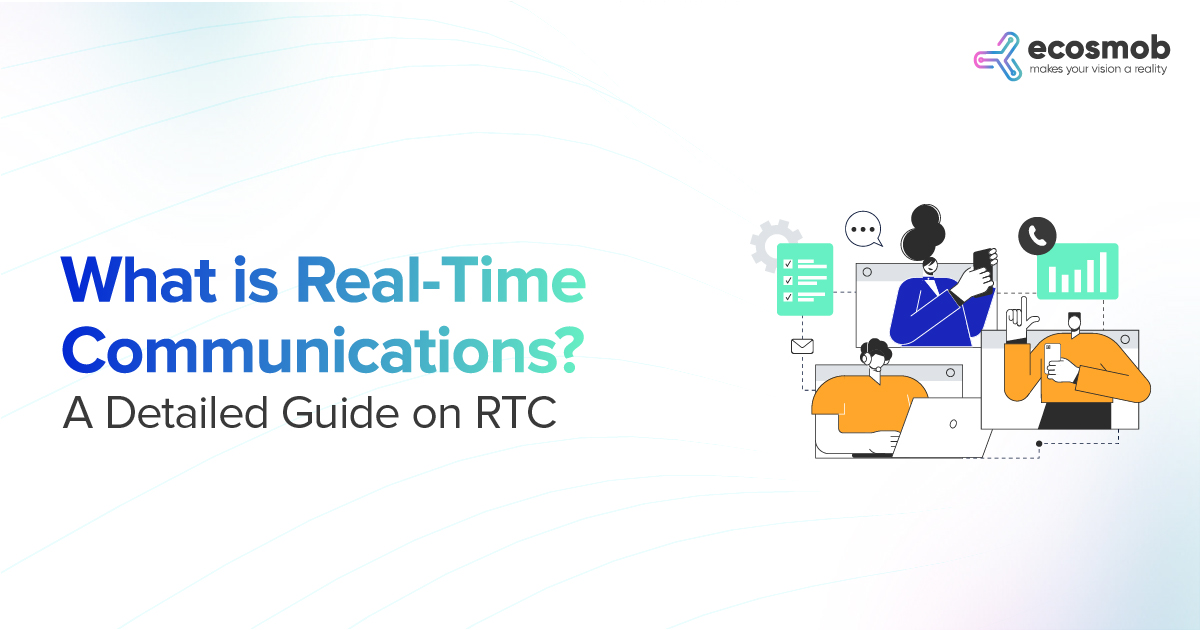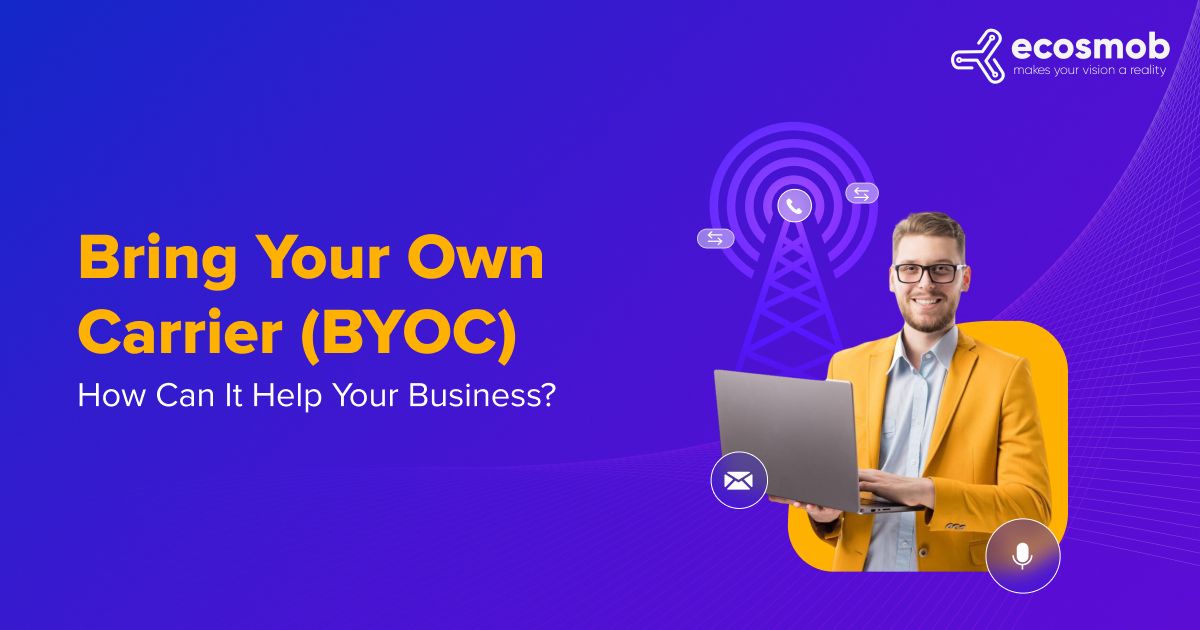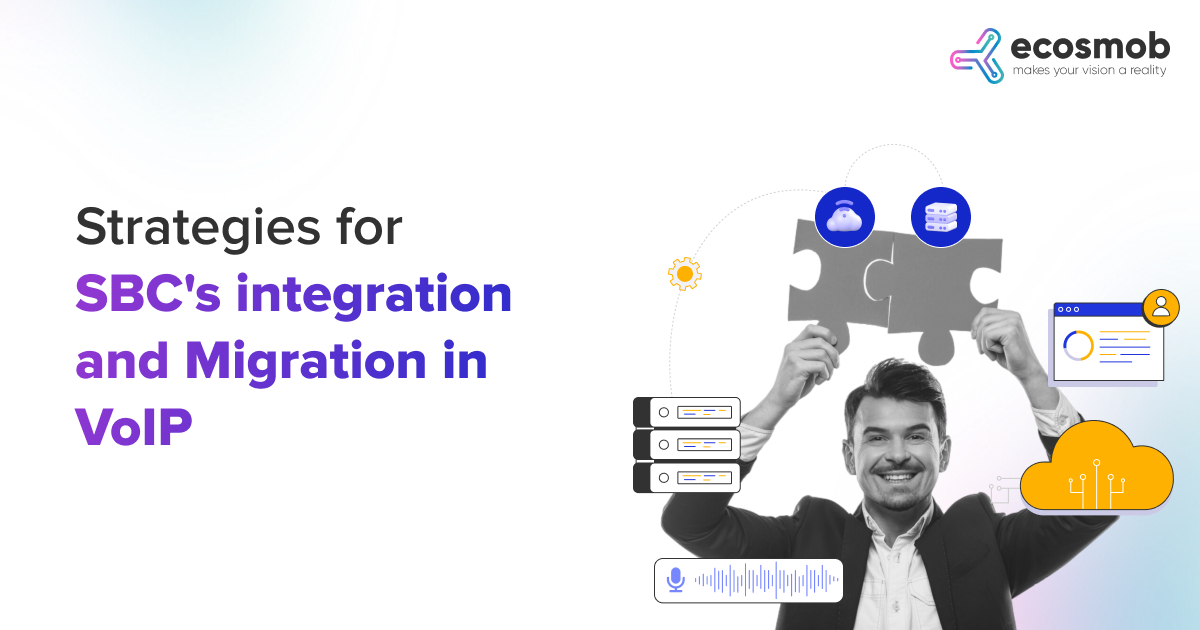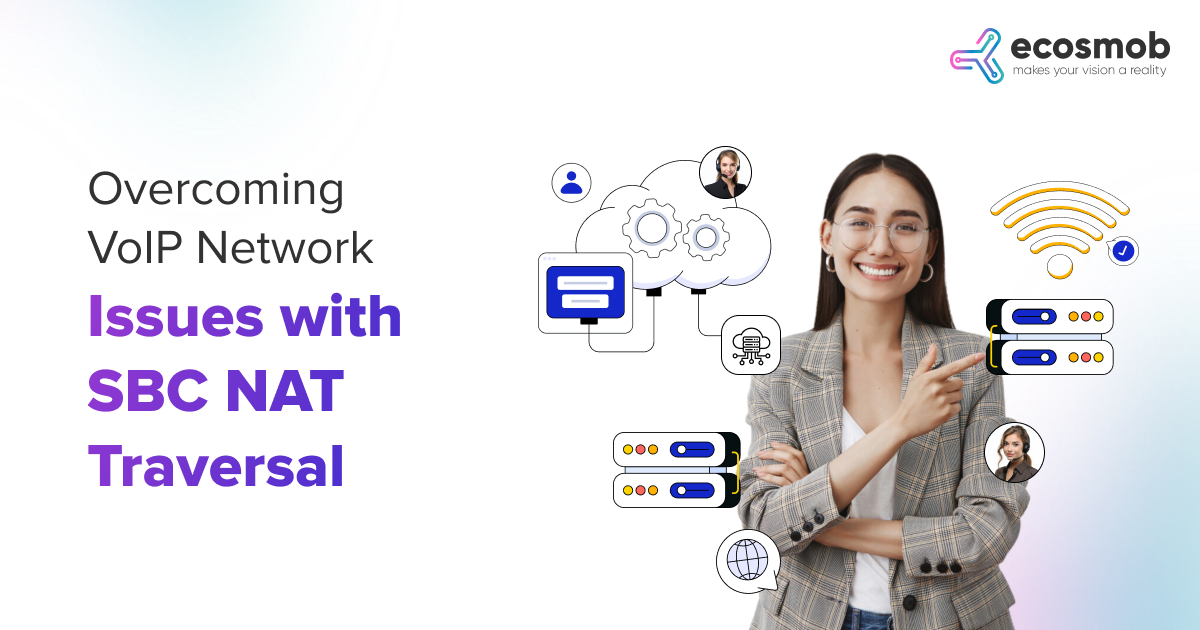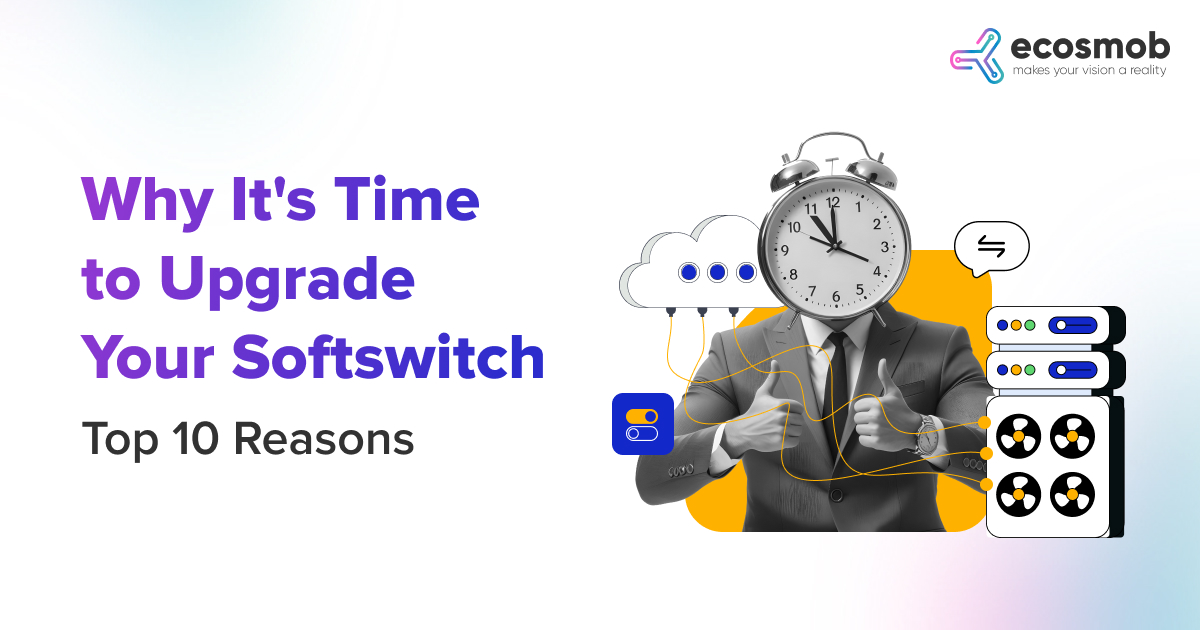Over the past several years, there has been a tremendous evolution in the communications scene. Businesses are now adopting innovative strategies to communicate with clients and coworkers through various channels and platforms. Unified Communication-based platforms are now the communication environment’s focal point for most agile brands and may be the most significant development.
Businesses have become accustomed to having greater flexibility in their communication services and solutions in this ever-evolving industry. One of the newest emerging trends is “Bring Your Own Carrier.” In essence, BYOC allows businesses greater control over their phone provider for video conferencing, digital contact centers, and unified communications.
However, if you are reading this blog, you might be interested in knowing more about BYOC. Do not worry; Ecosmob helps you to explore its definition, working, benefits, challenges, and future implications. Let’s delve in!
Wondering to Transform Your Telecom Experience with BYOC
What is Bring Your Own Carrier (BYOC)?
“Bring Your Own Carrier” (BYOC) is becoming increasingly popular in the telecom sector due to the widespread use of Microsoft Teams and other collaboration tools. Acknowledging that not every organization would benefit from its Calling Plans, Microsoft launched “Direct Routing,” which allows businesses to include their current phone providers in the Microsoft Teams environment. BYOC improves the communication stack and is especially useful in areas like SIP trunking, Unified Communications (UCaaS), and Public Telephony (PSTN).

According to the bics research, since 2014, the market for cloud services has more than doubled, and by 2027, it is projected to be valued at $927.51 billion.
Adding BYOC to a business’s telecom strategy can improve dependability and flexibility while saving much money. Companies may employ cloud communications for comprehensive geographic coverage, use session border controllers for safe and effective communications, and choose an SIP trunk provider with the best PSTN access. Furthermore, BYOC offers companies greater flexibility in carrier pricing and communication methods, allowing them to tailor their telecom experience to suit their requirements.
How Does BYOC Work?
As platforms such as Zoom, Microsoft Teams, and comparable offerings gain traction in today’s professional environment, businesses are reluctant to abandon their current communications provider in favor of embracing new technologies.
With BYOC solutions, customers may use the latest functionalities and features of their favorite CCaaS systems, conferencing platforms, and communication tools without sacrificing the phone feature.
Bring Your Own Carrier essentially entails letting a company select an SIP trunk provider to serve as the hub of the communication stack. Businesses keep control of their own PSTN access solution when they use BYOC. They can select the cloud-native Session Border Controllers that help VoIP service providers, the APIs and integrations they want to utilize, and the Session Initiation Protocol (SIP) trunking system.
What are the Key Benefits of BYOC, including SIP Trunking?
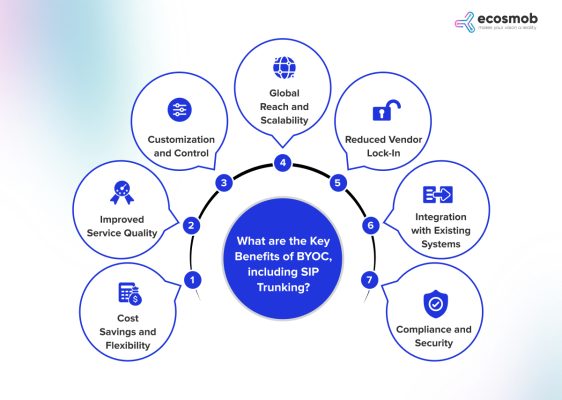
Businesses migrating to the cloud may encounter many scenarios where a BYOC might prove beneficial. For instance, some businesses are locked into difficult-to-leave multi-year contracts with carriers. Additionally, the companies could be based in several locations, and occasionally, regulatory concerns oblige them to use a specific carrier.
Depending on the business, bringing your own carrier with a new cloud communications solution may have different advantages. Among the most popular benefits are the following:
Cost Savings and Flexibility
BYOC, complemented by SIP trunking, enables businesses to select public telephony carriers, potentially leading to significant cost savings. Companies can shop around for the best rates and services, including those offered by SIP trunk providers. SIP trunking often comes with lower operational costs than traditional telephony, enhancing the cost-effectiveness of BYOC. Additionally, there’s flexibility in scaling communication needs up or down based on business requirements.
Improved Service Quality
Selecting carriers that provide SIP trunking can enhance service quality. SIP trunks are known for their high-quality voice and video communications, which is crucial for businesses that rely on these services. This combination ensures reliable communication with minimal downtime.
Customization and Control
BYOC with SIP trunking offers extensive customization and control over communication services. Businesses can tailor their telephony solutions, choosing SIP trunk features that align with their operational requirements. This customization can significantly improve efficiency and productivity.
Global Reach and Scalability
SIP trunking can extend BYOC’s benefits by facilitating reduced-cost international communication. Companies operating globally can benefit from SIP trunking’s ability to handle multiple media types and its compatibility with various international standards. This aspect helps in better coverage and service quality across different geographies.
Reduced Vendor Lock-In
Combining BYOC with SIP trunking minimizes the risk of vendor lock-in. Businesses can switch between SIP trunk providers without significant disruptions to their infrastructure, offering more flexibility and independence from single providers.
Integration with Existing Systems
SIP trunking enhances BYOC’s ability to integrate with elevating Cloud Communications with Virtual SBCs and other business systems. This integration supports streamlined operations and better data synchronization, leading to a more cohesive communication ecosystem.
Compliance and Security
Choosing SIP trunk providers compliant with industry-specific regulations can further strengthen the security and compliance aspect of BYOC. SIP trunking often includes advanced security features that ensure the protection of communication data.
BYOC, especially when integrated with SIP trunking, offers benefits like cost savings, improved service quality, customization, global reach, reduced vendor lock-in, easy integration with existing systems, and enhanced compliance and security. These benefits of SIP trunking make it an attractive option for businesses looking to optimize communication strategies.
What are the Specific Challenges of BYOC?
While BYOC offers numerous benefits, it also comes with challenges that businesses must navigate. Let’s discuss some of these challenges:
Compatibility and Integration
One of the primary challenges is ensuring that the chosen carrier’s services are compatible with the existing communication platform. Integration issues can lead to operational inefficiencies and be costly and time-consuming.
Quality of Service (QoS)
The quality of voice and video services is critical in the business communication stack. With BYOC, maintaining a high QoS can be challenging, especially if the chosen carrier’s network is unreliable or has bandwidth limitations.
Technical Support and Troubleshooting
When businesses opt for BYOC, they may need help in getting adequate technical support. Since two different providers are involved (the communication platform provider and the carrier), troubleshooting issues can become complex.
Regulatory Compliance
Telecommunications is a heavily regulated industry. BYOC models can complicate compliance with local and international regulations, especially concerning data protection, privacy laws, and call routing rules.
Cost Management
While BYOC can offer cost savings, it can also lead to unexpected expenses. Businesses must carefully evaluate the pricing models of different carriers and consider factors like international calling rates, data usage fees, and hidden costs.
Security Risks
Introducing an external carrier into an existing IT infrastructure can increase security vulnerabilities. Ensuring secure data transmission and protecting against cyber threats becomes more complex in a BYOC model.
Scalability
As a business grows, its telecommunication strategy needs to change. A chosen carrier under a BYOC model may not need help scaling up services efficiently, leading to potential service disruptions or a costly switch to a different carrier.
Navigating these challenges requires careful planning, a thorough understanding of the existing IT infrastructure and the capabilities of potential carriers, and a strategy for managing the ongoing relationship between the business, the communication platform provider, and the carrier.
What are the Real-World Applications of BYOC?
Many businesses, ranging from startups to large enterprises, have successfully adopted BYOC. For example, a global company might use BYOC to leverage local carriers in different countries, optimizing call quality and costs. Similarly, a startup might choose a page offering competitive international rates to support its expansion plans.
How Ecosmob Embraces the Future of BYOC?
Demand for BYOC technology is expected to increase as today’s business executives prioritize tailored and customizable solutions for collaboration and communications. The environment enables end users and businesses to obtain telephone capabilities precisely when and how they need them.
Ecosmob leverages its benefits and aligns it with its telecommunications strategy. BYOC is a method that allows businesses to choose their career to connect their unified communications (UC) provider to the PSTN. This concept is popular due to its flexibility and control over telephony systems. Moreover, Ecosmob can effectively use BYOC as part of its telecommunications strategy by focusing on communication flexibility, cost savings, and improved service coverage while addressing integration and ongoing support challenges.
In a Nutshell,
Bring Your Own Carrier represents a significant shift in business telecommunication. As the digital world continues to evolve, BYOC’s role in shaping efficient and adaptable communication strategies is undeniably crucial. It’s a strategic strategy that fits the ever-changing demands of contemporary enterprises, not merely a fad. Its adoption signifies a step towards more personalized, efficient, and scalable communication solutions, marking a new era in business telecommunications. However, BYOC may be ideal for your communication needs if you carefully consider your technical requirements, the project’s scale, and your team’s expertise. If you are seeking the same, Ecosmob is one of the industry-leading VoIP phone systems with BYOC service in many countries. However, if you require any help, feel free to contact us. Take your BYOC services to the next level
What is Bring Your Own Carrier (BYOC)?
BYOC is a telecommunications model where companies can independently select their voice carrier using a third-party hosted phone system or contact center software.
How does BYOC benefit businesses?
BYOC offers flexibility in choosing careers based on cost, quality, and geographical reach. It also allows businesses to negotiate better rates and services tailored to their needs.
Can BYOC be used with cloud-based systems?
Yes, BYOC is often used with cloud-based phone systems and contact center solutions, allowing businesses to maintain carrier relationships while leveraging advanced cloud functionalities.
What are the technical requirements for BYOC?
Businesses need a reliable internet connection and compatibility between their carrier's protocols and the hosted system. SIP (Session Initiation Protocol) trunking is commonly used for integration.
Is BYOC suitable for all business sizes?
BYOC can be advantageous for businesses of all sizes, but it's particularly beneficial for larger organizations or those with specific carrier needs due to regional or international operations.
What are the effective challenges of implementing BYOC?
Challenges can include ensuring compatibility between the carrier and the hosted system, managing multiple vendor relationships, and potential technical complexities in the setup.
